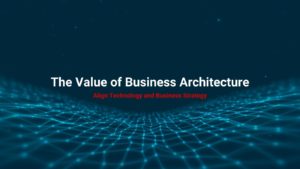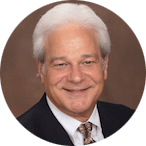Last week, thanks to my long-time friend Geoff Smith (Co-Chair of the Cincinnati CIO Roundtable), I had a chance to speak at the Greater Cincinnati IT Symposium. The Symposium overall was great, with over 300 IT leaders in attendance. I was honored to be on an opening panel and to have a chance to speak at an additional session later in the day.
The title of my talk was “Back to the Future: What 50 Years of Hard Road Tells Us About the Future”. This is a recurring theme in what we teach in our classes and in what I’ve written before here in our blog. I have a unique perspective as one of the few people who’ve been in this CIO profession since its beginning over 50 years ago and still in the fight today guiding and continuing to learn from our over 40 clients. I’m passionate about this topic. It’s our mission to share our experiences and knowledge with and continuously exchange ideas and learn from the next generation of CIOs and business executives who have the mandate and the opportunity to lead forward in these exciting but complex and fast-moving times.
Why This Is Important
 As CIOs and IT leaders, we’ve been doing “digital transformation” – even if by other names – for decades. We used to have to work hard to convince business executives WHY technology matters. Now, the fast-changing and unpredictable business and technology context and the relentless marketing hype, every company knows the WHY. The next challenge is setting and selling an agenda for transforming the WHAT, HOW, WHO, and WHEN so we can deliver true business enablement and agility. It’s our time to lead. What do we know about all of that? We know a lot. Yes, the technology is new and better, and the pace has dramatically increased. But there are timeless principles, patterns, frameworks, and architecture concepts that we know and must apply going forward to win in the modern “digital” era.
As CIOs and IT leaders, we’ve been doing “digital transformation” – even if by other names – for decades. We used to have to work hard to convince business executives WHY technology matters. Now, the fast-changing and unpredictable business and technology context and the relentless marketing hype, every company knows the WHY. The next challenge is setting and selling an agenda for transforming the WHAT, HOW, WHO, and WHEN so we can deliver true business enablement and agility. It’s our time to lead. What do we know about all of that? We know a lot. Yes, the technology is new and better, and the pace has dramatically increased. But there are timeless principles, patterns, frameworks, and architecture concepts that we know and must apply going forward to win in the modern “digital” era.
The Timeless Principles
Cutting to the chase, here are the dozen timeless principles that I’ve learned over the years. These principles are the basis for what we teach and how we help our CIO and Executive Team clients. These principles, now more than ever in the modern era, are valuable guides for creating a strategy for and leading through a sustainable strategy for transformation.
- No Blind Spot, No Daylight, Between Business & IT: People, Plans, Language
- Three Essential Outcomes for True Agility: Business, Architecture, Productivity
- Zoom Out, Wide Aperture Continuous Multi-Year Planning: Imagine, Justify, Plan, Architect BIG
- Progressive Elaboration & Decomposition: Develop, Implement SMALL; Continuously Deliver Value
- Systems Thinking: No Point Solutions, Only as Good as the Weakest Link
- The WHO is Where All the Leverage Is: Especially Leadership and Talent
- 30 “Game Changers” to Set & Sell the Agenda and Make the Turn
- Functional Excellence is Table Stakes; Cross-Functional Excellence is Force Multiplier
- Think Capabilities: Common vs. Unique, Founder Sense & Respond
- Architecture Matters: Layered, Loosely Coupled, Durable Core, Flexible Edge
- Consistent Investment in Legacy Modernization
- Start with Focused Beachhead then Expand and Accelerate to Sustain the Transformation
My book, called the Blind Spot – A Leader’s Guide to IT-Enabled Business Transformation, containing these principles, was written 10 years ago. What a decade it’s been! There’s been massive disruption, innovation in technology, dramatic acceleration in change, and increasing business and technical complexity. So, recently, I re-read the book just to see if the principles in the book are still meaningful and relevant today. Frankly, I was surprised to find that what was said in that book is even more true and relevant today than it was when I wrote it back then. The words might have been a little different, but the concepts and lessons are the same as that list above.
Lessons Learned and Pattern Recognition Over Time
These timeless principles come from experience (that “50 years of hard road”), analytical, and pattern or systems thinking. My journey and collaboration along the way with great colleagues and clients over the years has both taught those lessons and reinforced them as lasting principles that continue to be valuable going forward. The talk I just gave in Cincinnati followed that journey and thought process.
For me, it started with the Frito-Lay story – see Harvard Business School case study called “Frito-Lay, Inc.: A Strategic Transition (Consolidated)”. Back in 1981, when I became the CIO, here’s what we knew about the future.
- Customer and Employee expectations will continue to evolve.
- Business Models will constantly be changing.
- Customer, Product, Service, and Process innovation is the key to growth and profitability.
- Functional excellence continues to be table stakes; Cross-functional excellence is required to win.
- The rate of technology change will continue to accelerate.
- Only Businesses that can innovate at speed and scale will survive and thrive.
- This rapid and continuous change is not going away.
Does this sound familiar? These are the same things we know today about our future going forward. At Frito-Lay, at that time, it was hard to imagine, and even harder to architect and deliver the kind of technology enabled business transformation that this vision required. But we figured it out, and along the way, learned many valuable lessons.
In the decades since that Frito-Lay story, many things have changed: the pace of change, the complexity of business models and markets, the importance of technology in business, the power of the technology itself, and so on. However, over time, with The Feld Group and with EDS and now with The Feld Group Institute, we’ve seen the patterns repeat themselves and prove useful, regardless of era and regardless of the specific details of each era. Through application at dozens of companies – Burlington Northern Santa Fe Railway, Delta Air Lines, Home Depot, Coca-Cola, Rolls Royce, BellSouth, FedEx, Bank of Montreal, Southwest Airlines to name a few – we’ve refined and hardened those lessons learned. We believe that 50 years and dozens of transformations is enough to call them timeless principles.
Continuing to Apply, Learn, and Refine
We apply these principles by teaching them in our classes and use them for guidance and grounding in our strategy and consulting engagements. But what I’m most excited about is the fact that, with our clients and our alumni community, we continue to learn new things, adapt to those things that are changing, and refine these principles. We are called The Feld Group INSTITUTE because we are a learning organization and community of technology and business leaders. So, the learning continues, and the dialogue across the profession continues.
Author: Charlie Feld, Founder, The Feld Group Institute
Connect with Charlie Feld on LinkedIn ![]()




